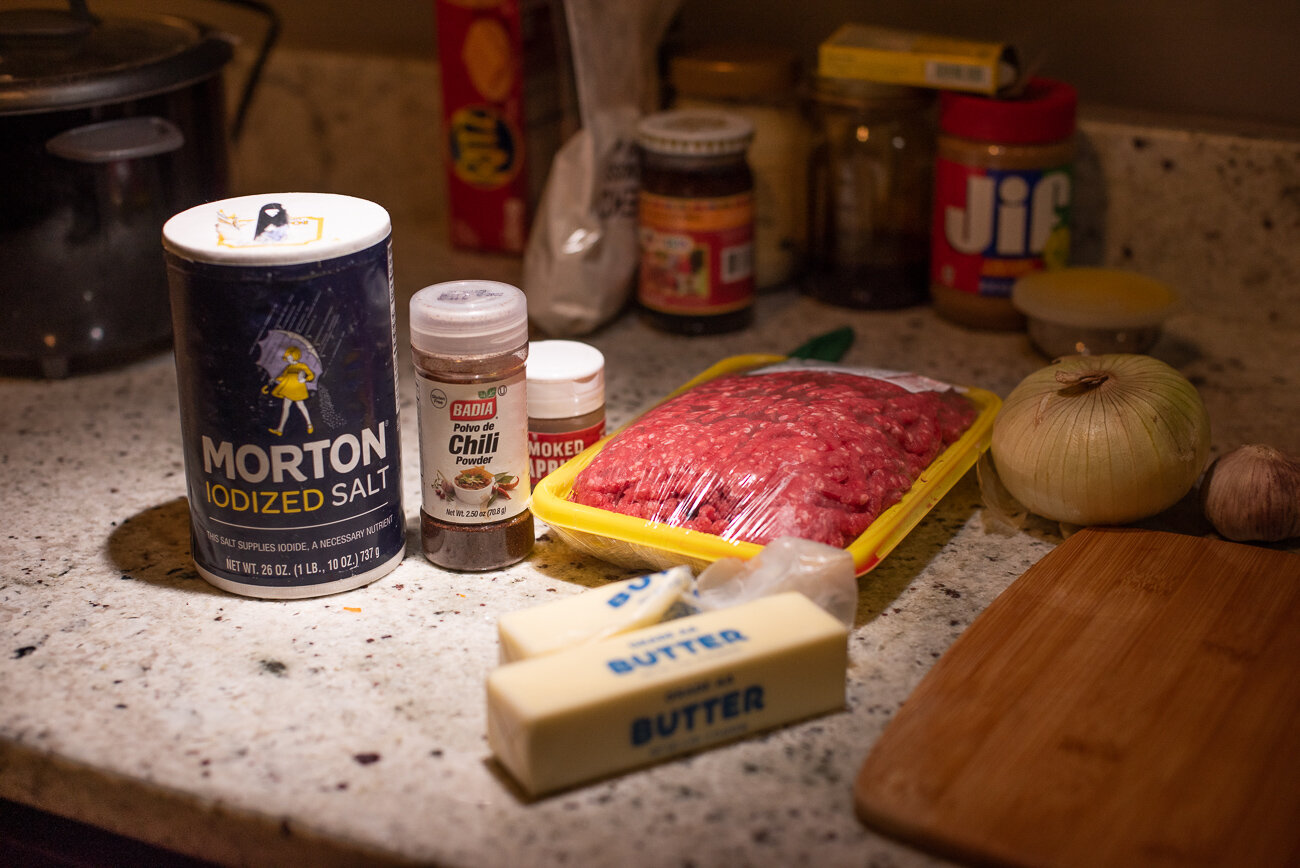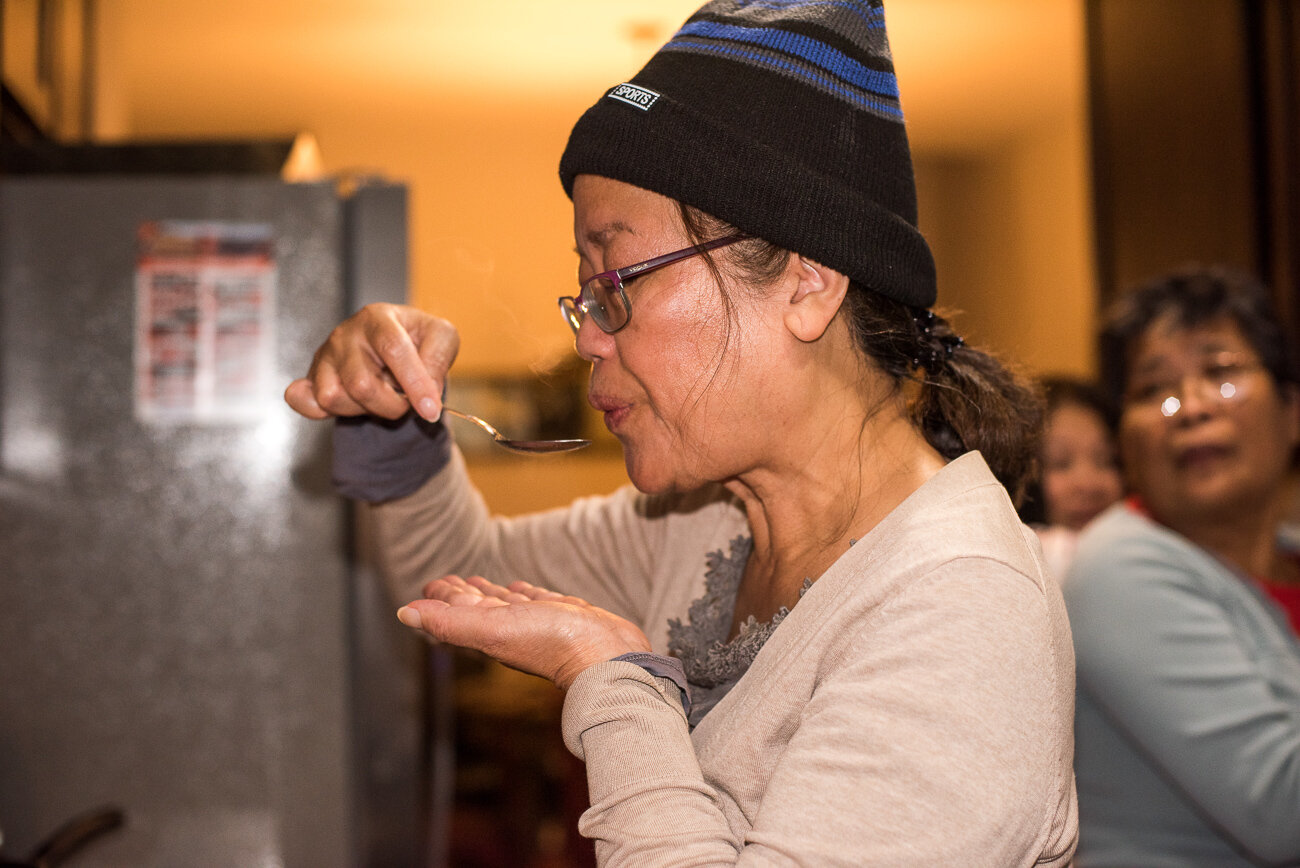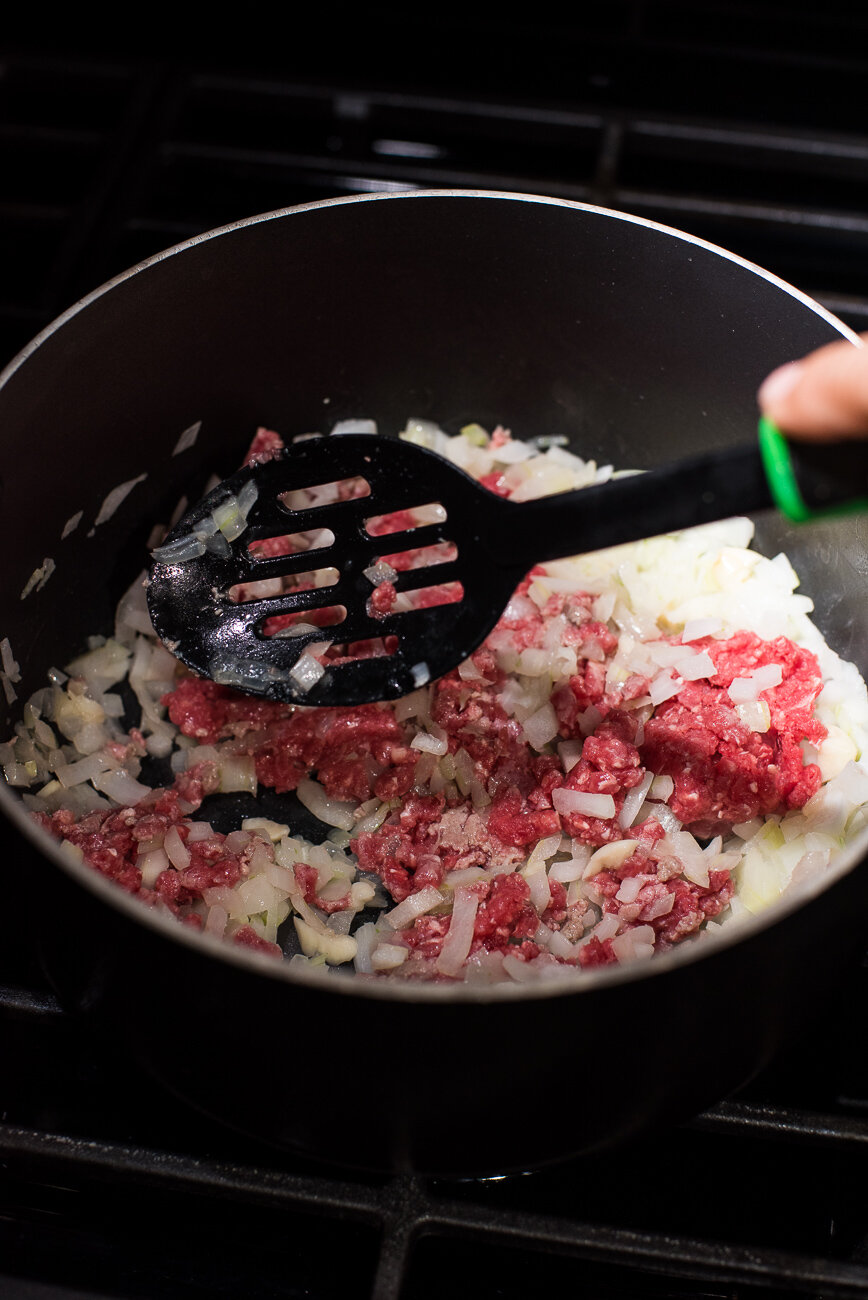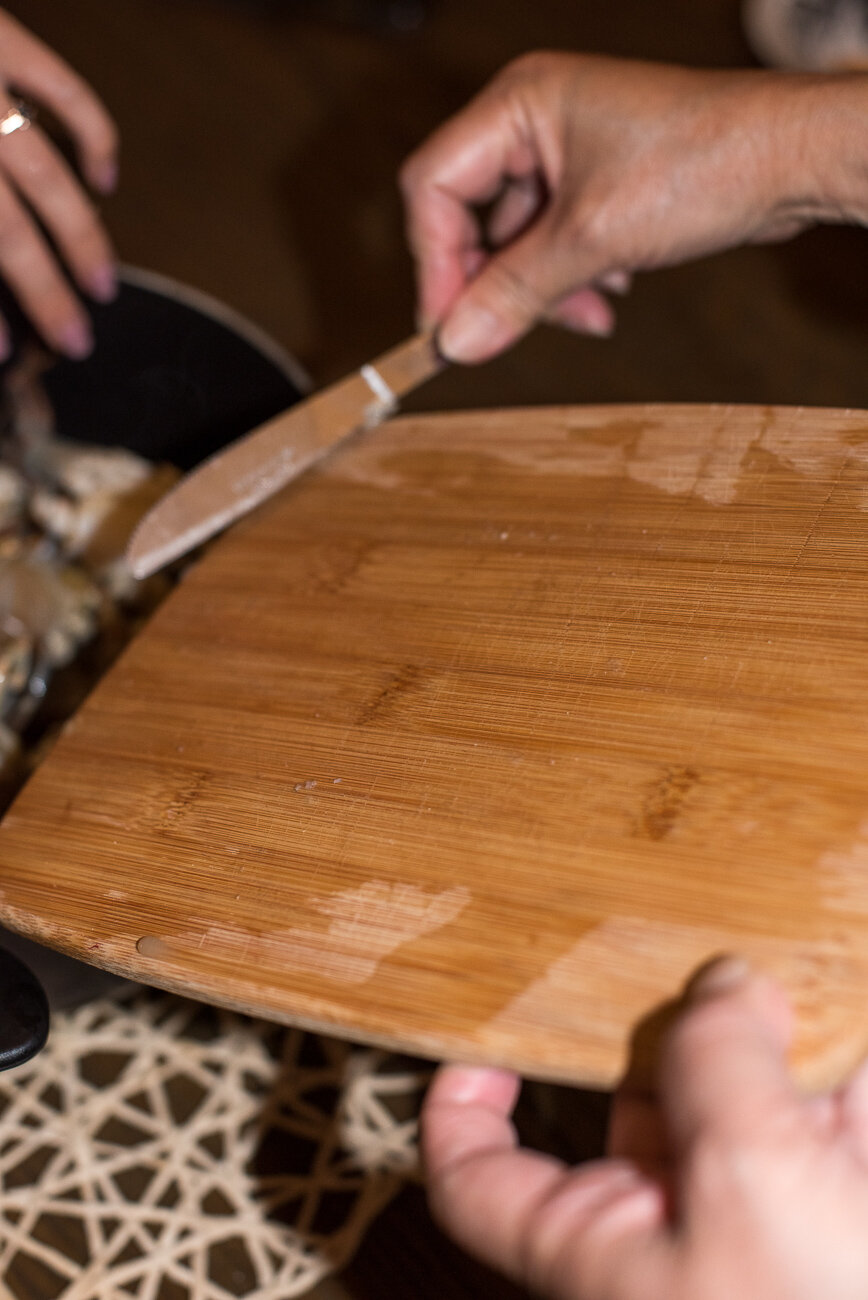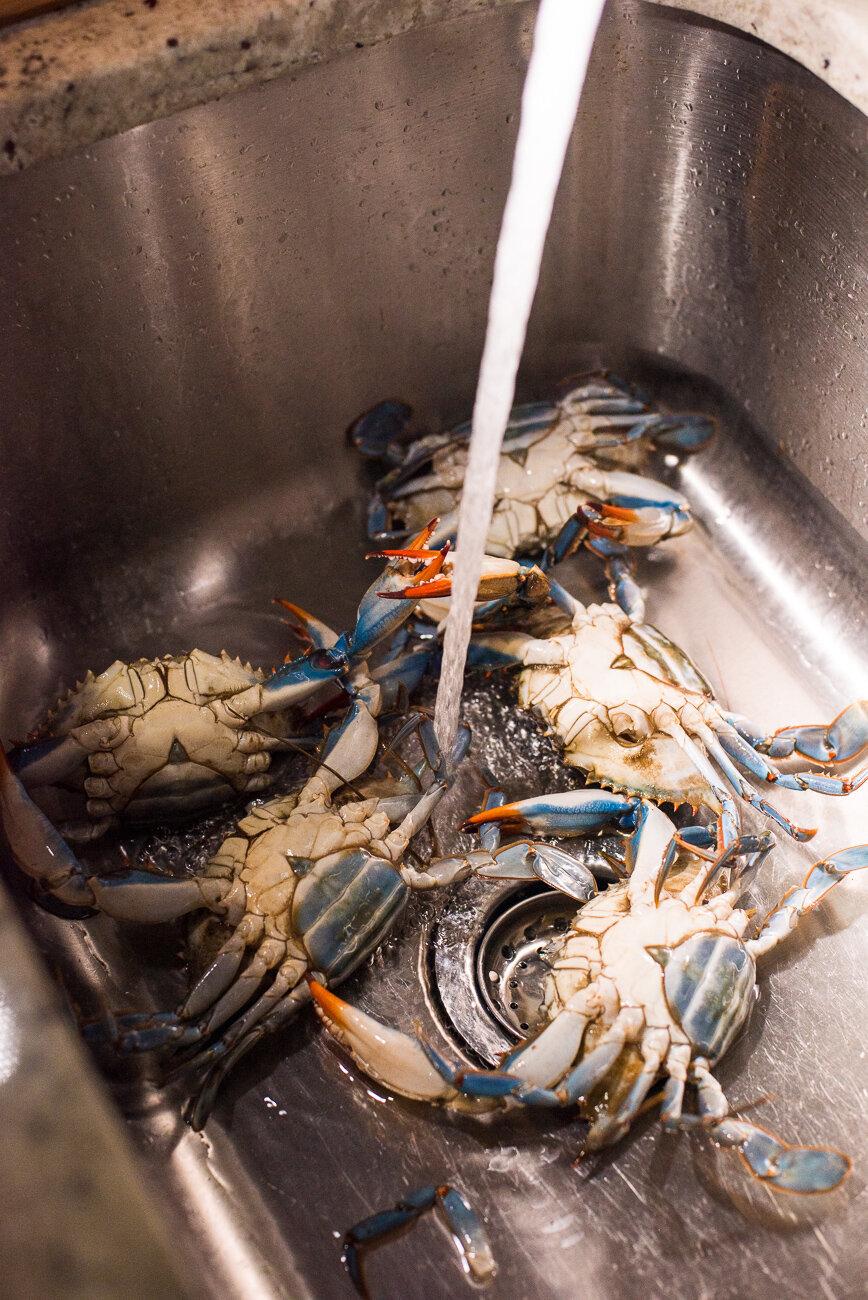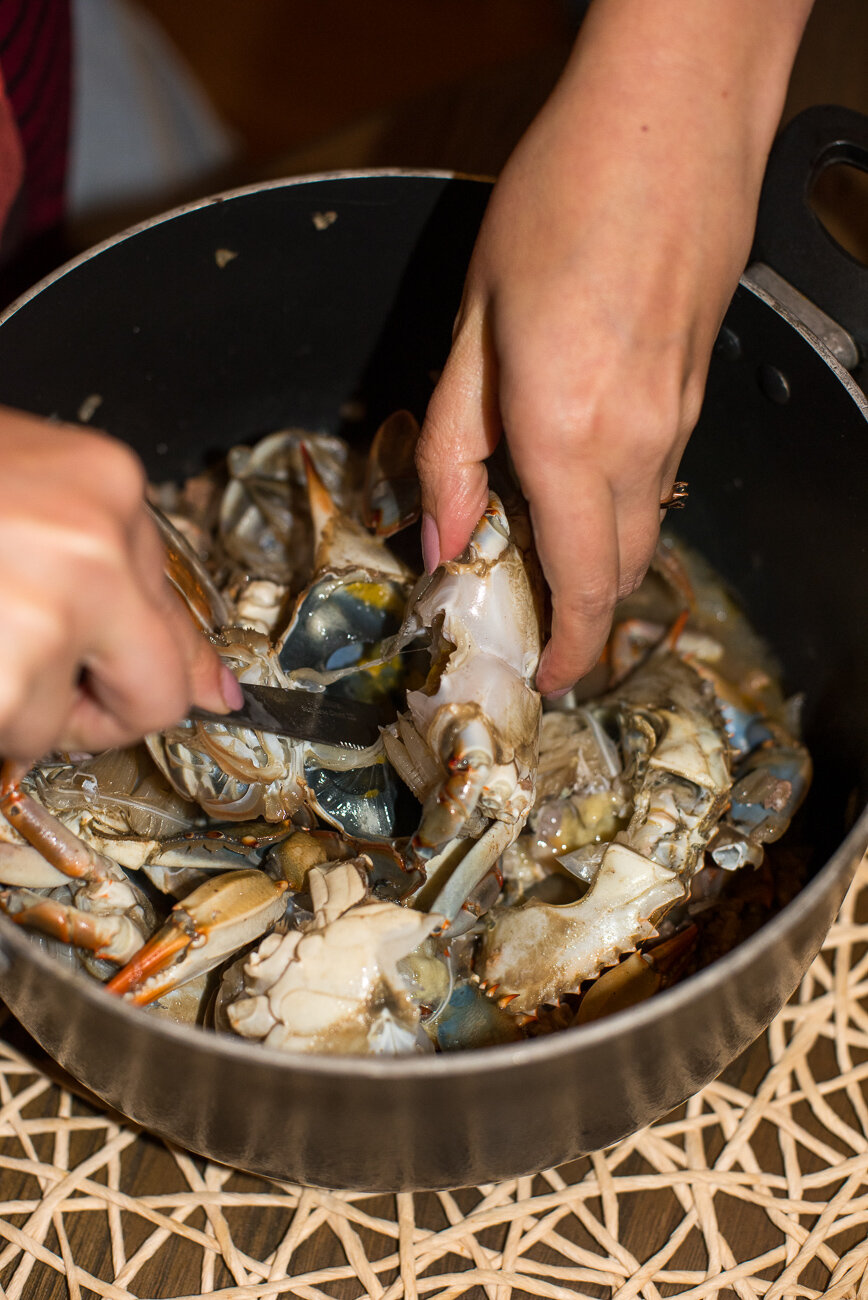Half-cooked crab
Jamie & her Mom’s Memory
We’re back! What started as a “summer break” turned into a crazy fall. What better way to fall forward than to share my mom and titas’ cooking and memories.
My maternal titas are visiting from the Philippines this fall/winter. After a long and grueling visa application process, they are finally getting the chance to see the life that my family and I have built for ourselves here in the States (the last time I saw them was in 2011 when I visited them). Since it’s their first time in America, they’ve been visiting all the tourist sites and taking many selfies -- and there’s been a lot of incredible homecooking happening. The time I have spent with my mom and titas in the kitchen these past few months made me realize the richness of their food memories and how much I’ve missed their cooking. I hardly get to eat my mom’s food now that I reside on the other side of the country (sob).
When I was growing up, we ate blue crabs in a slightly different way than I do now in the crab capital that is Maryland. They go hard for jumbo male crabs here, but in the Philippines, they cherish their females and mothers even down to the crustacean form. During their visit to Baltimore, we spent an evening cooking this alimasag at baka. Here is part of my mom’s and titas’ story about growing up in Parañaque in the early sixties, a city by the bay that occupies the southern part of Metro Manila...
“When I was between 5-7 years old, my dad, older brother & sister, and I would go to the bay to collect blue crabs, crablets, clams and seashells. We went there both for fun and to get our lunch. It was one way to save money. We would work for our food. We went early in the morning when the tide was low and we could walk out on the sandbars. There were a lot of crabs and shells then when the marshes still existed. We would select them from the sandbar with our bare hands. We needed to rush doing that. After 2 hours, 4 hours, the sandbars would be gone. My dad would put me on his shoulders and the other two on his back. They would ride on him like a horse. My father was the horse. And then he would swim with the three of us on his back, back to the beach. We collected clams there and put them in reused Nido milk cans. We would fill that and that would be our lunch. The marshes are gone now. They built over it.”
My mother is an intuitive cook. She doesn’t really measure her ingredients and sparingly uses seasonings. There were numerous times when Marisa implored me to look and pay attention to what my mom was doing in the kitchen as she added a quick flourish of salt or sugar. She tasted throughout the whole process. All the sisters agreed on the philosophy of “tantya tantya lang” which roughly translates to “go by estimation.”
Marisa’s review
There were so many elements of this dish that resonated with me. Blue crabs have always evoked family time, communal eating, summer holidays, and salty skin. As a Marylander, this blushing blue crustacean is loaded with nostalgia & sweet meat. But, I had never eaten them like this before! I’d only ever seen female crabs served in “She-Crab Soup.” As I watched it being prepared, I realized how silly I’d been cooking only with males all my life. The female crab has so much more to offer in terms of flavor: her roe, her fat reserves. When I finally got a spoonful of crab with beef & soft onion, and a bit of rice soaked in all the juices, my eyes rolled back in my head. I couldn’t eat it fast enough!! A totally luxurious dish with its multiple proteins, it’s also definitely not for those who are squeamish or lazy about picking. It also made me reevaluate cooking with sugar. I don’t ever think to reach for sugar outside of baking, but a pinch here & there is as effective as salt in amplifying flavors and balancing fat. We will be making this again & again. I’m already counting the days.
The fact that the marshes of Parañaque no longer exist, having been filled in and developed, was a sad parallel to the disappearing marshes on the Chesapeake Bay and Eastern Shore. The bounty of our waterways can’t be taken for granted. Other coastal communities like New Orleans and Maine are rapidly losing local oyster and cod populations. Please make sure you’re buying sustainable seafood & protecting our waterways!
…
Blue Crabs: From Parañaque to Baltimore
5 cloves of garlic, chopped
1 medium-sized onion, chopped
1 tbsp of butter
1/2 lb ground beef, 80/20 blend
1 tsp salt or to taste
1 tsp pepper or to taste
1 tsp chili powder or to taste
1 tsp paprika
5 live female crabs
Rinse live crabs in sink.
Saute garlic and onion in butter in a tall pot until they are translucent
Add ground beef with salt, pepper, chili powder, and paprika. Break it up with a big cooking spoon. Cook for 2 minutes.
Transfer live crabs into bowl or colander and swiftly add them to beef mixture. Cover pot quickly so they don’t escape!
Cook crabs for 5 minutes or until all the crabs stop moving. They will appear barely cooked with some pink and blue color. (See photo) Take pot off of heat.
Separate shell from body by inserting flat knife in the space between the crab apron and carapace. Then crack the body in two halves with your bare hands. Keep all the shells, organs, and fat in the pot! Crack them open on a cutting board if it’s easier but leave no crab liquid (sabao) to waste!
Place pot back on medium heat and cook until crab meat is white and opaque and shells are red. Should be about 5-10 minutes.
Scatter a generous pinch of white sugar around pot and mix all together for another minute. Taste and adjust for seasoning.
Serve with rice. Eat with your hands.
Kain na!
This Memory Kitchen Series is a creative collaboration between Marisa & Jamie. Each month, one of us will cook a recipe entirely from memory (no long phone calls to Mom, no recipe cards, no cookbooks, no Googling!) and the other will review the dish. The recipe that follows is exactly what’s pictured (all photos by Jamie Sumague, of course!). We have no idea how it will turn out when we start, so expect a few disasters along with the occasional triumph.


